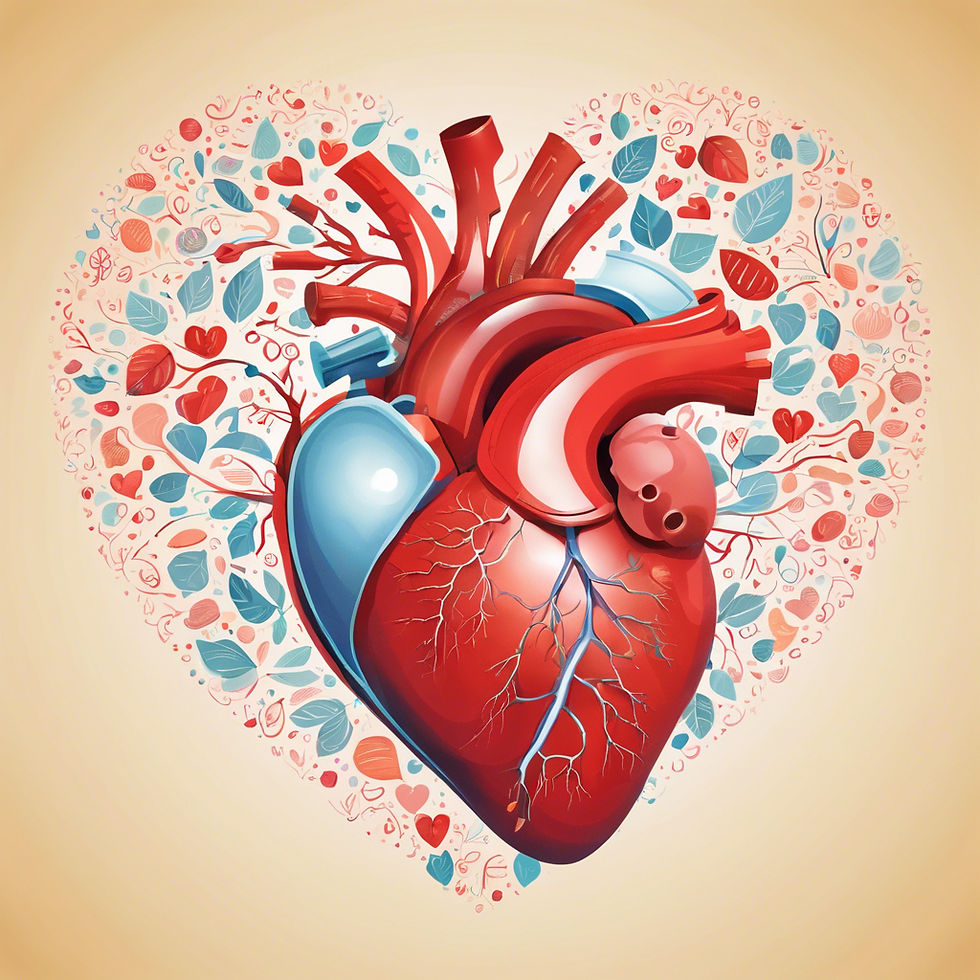Pain & Heart Rate Variability: Part 2
- Matt Bennett
- Aug 7, 2024
- 4 min read

As a quick recap from our previous post, we delved into the concept of heart rate variability (HRV), a measure of the variation in the time intervals between consecutive heartbeats. HRV reflects the autonomic nervous system (ANS) activity, which governs many involuntary bodily functions, such as breathing, digestion, and blood pressure. The ANS is comprised of two branches: the sympathetic nervous system (SNS), which readies the body for stress or danger by increasing heart rate, blood pressure, and respiration, and the parasympathetic nervous system (PNS), which restores the body to a state of calm and relaxation by decreasing heart rate, blood pressure, and respiration. HRV serves as an indicator of the equilibrium between these two branches: a higher HRV signifies a more flexible and adaptive ANS, while a lower HRV indicates a more rigid and less responsive ANS.
Today, we will delve into the intricate relationship between pain and HRV. Pain, a complex and subjective phenomenon, encompasses sensory, emotional, and cognitive aspects. Depending on its duration and cause, pain can be acute or chronic. Acute pain, often resulting from tissue damage or injury, is short-lived. In contrast, chronic pain, which persists for more than three months, often lacks a clear cause or explanation. Regardless of its form, pain can significantly impact the quality of life, mood, and functioning of those who experience it.
How does pain affect HRV? Several mechanisms explain the link between pain and HRV. One mechanism is that pain activates the SNS, which increases heart rate and reduces HRV. This natural and adaptive response helps the body cope with the threat or injury. However, if the pain persists or becomes chronic, the constant activation of the SNS could lead to a state of chronic stress, which impairs the ability of the ANS to adjust to changing situations and lowers HRV.
Another mechanism is that pain influences the PNS, which decreases heart rate and increases HRV. This natural and adaptive response also helps the body modulate and regulate the pain sensation. However, if the pain is too intense or overwhelming, the PNS could become overwhelmed and unable to maintain the balance of the ANS, which also lowers HRV.
A third mechanism is that pain affects the central nervous system (CNS), which controls the ANS and the perception of pain. Pain can alter the activity of various brain regions and neurotransmitters in regulating the ANS and processing pain signals, disrupting the communication and coordination between the CNS and the ANS, resulting in a reduced HRV.
What does the research say about the connection between pain and HRV?
A systematic review by Koenig et al. (2016) scrutinized 48 studies that measured HRV and experimentally induced pain in healthy adults. The review revealed that most studies reported decreased HRV during pain stimulation compared to baseline or control conditions. This effect was more pronounced for pain stimuli that were more intense, unpredictable, or longer in duration. The review also identified factors that could modulate the relationship between pain and HRV, such as the type of pain stimulus, the location of pain, the personality traits of the participants, and the use of cognitive strategies to cope with pain. The review concluded that HRV, as a sensitive indicator of pain perception and modulation, could be a valuable tool for assessing and monitoring pain and its associated conditions.
A meta-analysis by Kemp et al. (2010) examined 73 studies that measured HRV and depression or antidepressant treatment in adults. Depression is a common comorbidity of chronic pain, and both conditions can affect HRV. The meta-analysis found that depressed patients had lower HRV than healthy controls and that antidepressant treatment increased HRV in depressed patients. The meta-analysis suggested that HRV is a biomarker of depression and its treatment response and that depression and chronic pain could share common mechanisms that affect HRV.
In summary, pain, and HRV are closely related, and both reflect the activity and balance of the ANS. Pain can reduce HRV by activating the SNS, inhibiting the PNS, or altering the CNS. HRV can indicate the perception and modulation of pain, as well as the presence and treatment of depression. These insights into the relationship between pain and HRV could be a game-changer in the field of pain management, offering a valuable tool for assessing and monitoring pain and its associated conditions. By evaluating the effectiveness of interventions to improve pain management and quality of life, HRV could empower healthcare professionals and individuals to make informed decisions about their health.
On September 19th, Optimal HRV teammates Dr. Inna Khazan and Dr. David Hopper will present a three-hour Pain Management & Heart Rate Variability presentation. This comprehensive training will equip you with the necessary knowledge to understand the complex relationship between pain and heart rate variability. You can learn more about the training here.
References
Koenig, J., Jarczok, M. N., Ellis, R. J., Hillecke, T. K., & Thayer, J. F. (2016). Heart rate variability and experimentally induced pain in healthy adults: A systematic review. European Journal of Pain, 20(3), 301-314.
Kemp, A. H., Quintana, D. S., Gray, M. A., Felmingham, K. L., Brown, K., & Gatt, J. M. (2010). Impact of depression and antidepressant treatment on heart rate variability: A review and meta-analysis. Biological Psychiatry, 67(11), 1067-1074.
International Association for the Study of Pain. (2011). IASP taxonomy.


